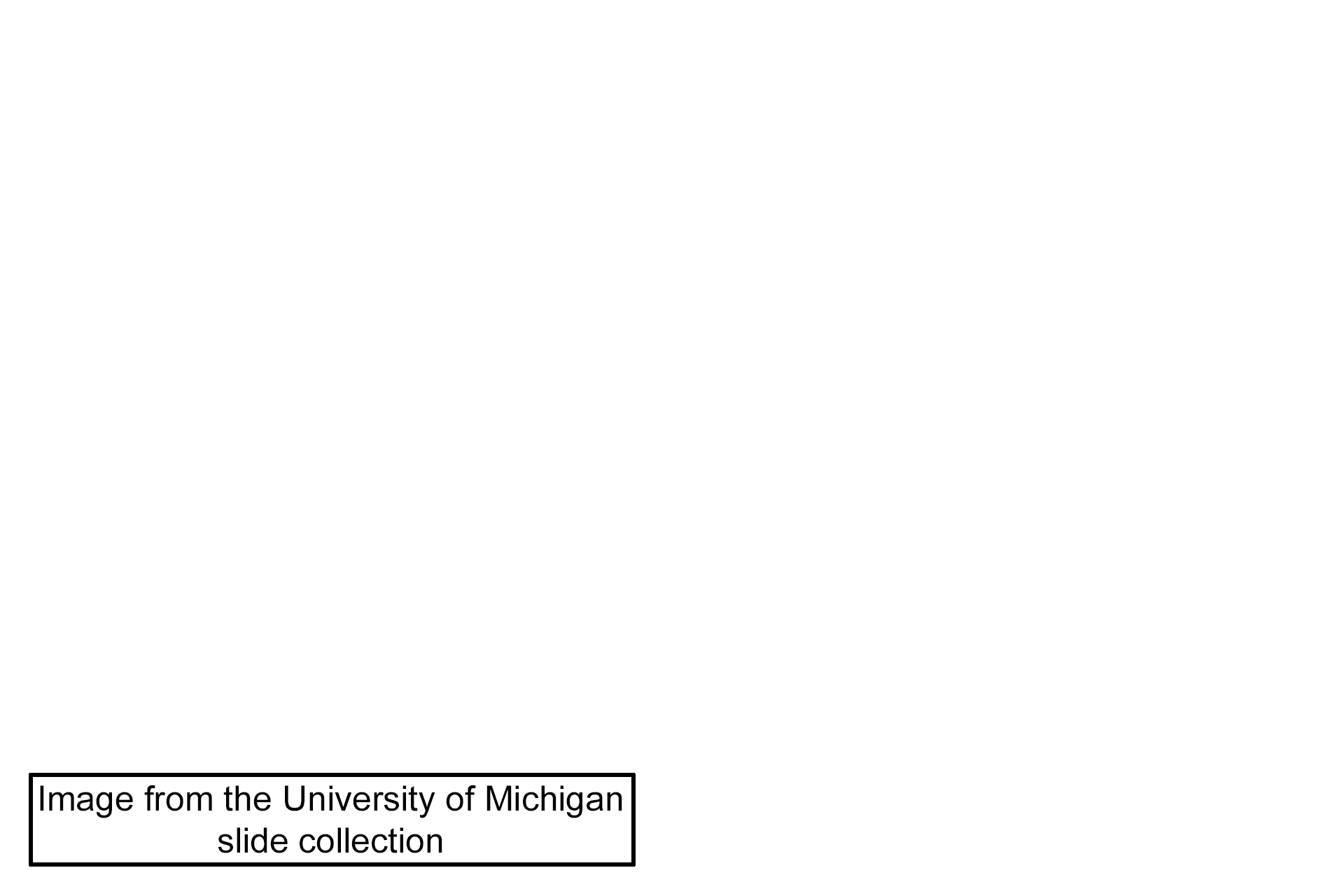
Uterus: proliferative phase (Days 6-14)
The uterus is composed of an endometrium, similar to a mucosa; a myometrium, analagous to muscularis externa; and a perimetrium, that is either a serosa or an adventitia depending on its location. Endometrium, influenced by ovarian hormones, changes during the menstrual cycle, preparing for implantation of the blastocyst about day 21. 10x

Endometrium >
The endometrium, facing the uterine lumen, is composed of a simple columnar epithelium and its underlying lamina propria, called uterine stroma. A portion of endometrium is sloughed during menstruation. Three factors aid in deciding what menstrual stage a uterine image represents: thickness of endometrium; activity of endometrial glands; and prominence of coiled spiral arteries.

- Basal zone >
The basal zone of the endometrium lies adjacent to the myometrium and is retained during menstruation. Following menstruation cellular proliferation in the basal zone restores the glands, the surface epithelium, and the stroma (connective tissue lamina propria).

- Functional zone >
In response to ovarian hormones, the functional zone of the endometrium is entirely sloughed during menstruation. The appearance of the glands in the functional zone helps to identify each menstrual stage. In the image on the left, the glands are straight and are not sacculated. On the right, although some glands are wavy, they are not sacculated.

Myometrium >
The myometrium, analogous to the muscularis externa, is the thickest layer of the uterus. It is composed of interlacing bundles of smooth muscle, which undergo both hypertrophy (cell growth) and hyperplasia (cell division) during pregnancy. The myometrium is extremely well vascularized. The perimetrium lies exterior to the myometrium, but is not present in either image.

Next image >
The next image is similar to that outlined by the rectangle.

Image source >
This image was taken of a slide in the the University of Michigan collection.